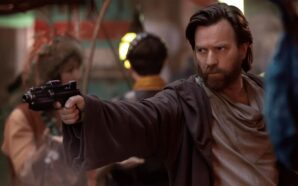Fargo season four has some problems. The comedy-drama tries its hand at being a crime epic but bites off more than it can chew. The show works when it zeroes in on specific characters and focuses its vision but too often the sheer sprawl of the narrative forces the character work to be spread thin. It’s a messy season of the show, the weakest yet, but ultimately still entertaining. It may be Fargo at its worst but it’s still Fargo. That’s a complaint I see bandied around the Internet by people who dislike the fourth season: “It just isn’t Fargo” and while it’s a flawed season, it’s undoubtably still Fargo, from its smallest details to its largest thematic ideas.
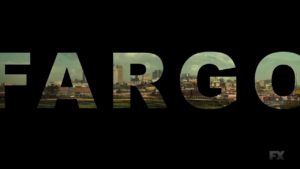 The fourth season, set further in the past than we’ve ever seen before, in 1950’s Kansas City, is approaching the material from a fresh perspective. I think the reworked title card at the beginning of each episode reveals exactly what this season is in relation to the wider Fargo story. Gone is the red lettering and instead we get a huge, hollow font. This season we’re seeing through Fargo; behind Fargo; beyond Fargo. Season four is the backdrop for all the other seasons, the story of the setting, the world. Not just Minnesota but the crime story of America. This visual motif continues past the title card and into the unique split screen effects, different from those in the second season, where we once again see the action through the title.
The fourth season, set further in the past than we’ve ever seen before, in 1950’s Kansas City, is approaching the material from a fresh perspective. I think the reworked title card at the beginning of each episode reveals exactly what this season is in relation to the wider Fargo story. Gone is the red lettering and instead we get a huge, hollow font. This season we’re seeing through Fargo; behind Fargo; beyond Fargo. Season four is the backdrop for all the other seasons, the story of the setting, the world. Not just Minnesota but the crime story of America. This visual motif continues past the title card and into the unique split screen effects, different from those in the second season, where we once again see the action through the title.
Fargo claims to be a true story but that’s a lie. In fact, Noah Hawley has shaped the series into a story about truth, especially in the third season’s war between objective and subjective reality. The fourth season tackles the idea on a wider, national scale. America has a version of its history it claims to be true but its not, and like Fargo, it’s a crime story. It’s also a story about the gentrification of cultures. In a nation of immigrants, how does one become American? That question is at the heart of the season and is pure Fargo, especially when the answer is “To be an American is to pretend”. Truth is a lie and a lie is truth.
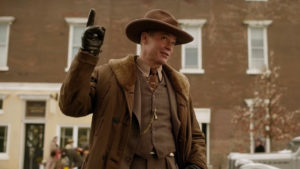 On the more surface, formulaic aspects of the series, the season looks at the new setting of 1950 and uses it to intentionally turn some things on its head. The classic ‘good vs evil’ character dynamics are re-examined, especially on the crime syndicate side of things, which I’ll get to later, but the usually wholly good characters in Fargo are now anything but. The god-fearing Mormon police marshal is a racist and the nurse is this season’s pure evil character. I’ll agree with the complaint that we didn’t get enough of Timothy Olyphant’s carrot-chewing officer but, despite what the previous three seasons may have implied, Fargo isn’t a cop story. It’s a crime story. The police should be part of it but not necessarily to a huge extent. Think back to the film: Marge Gunderson doesn’t appear until 30 minutes into a 90-minute movie.
On the more surface, formulaic aspects of the series, the season looks at the new setting of 1950 and uses it to intentionally turn some things on its head. The classic ‘good vs evil’ character dynamics are re-examined, especially on the crime syndicate side of things, which I’ll get to later, but the usually wholly good characters in Fargo are now anything but. The god-fearing Mormon police marshal is a racist and the nurse is this season’s pure evil character. I’ll agree with the complaint that we didn’t get enough of Timothy Olyphant’s carrot-chewing officer but, despite what the previous three seasons may have implied, Fargo isn’t a cop story. It’s a crime story. The police should be part of it but not necessarily to a huge extent. Think back to the film: Marge Gunderson doesn’t appear until 30 minutes into a 90-minute movie.
The show’s answer to Annie Wilkes, Oraetta Mayflower, is the voice of the Fargo we know. Not only because of her ‘Minnesota nice’ accent but her words too. She believes in star signs and astrology, which in the real world is complete hokum but in the world of Fargo makes perfect sense. Happenstance and coincidence really do play a huge part in these stories, in many Coen Brothers stories, and season four is no different. There’s an element of cosmic justice running throughout Fargo, of the universe setting itself right after an imbalance, often but not always through a supernatural element, like the UFO, the Wandering Jew, or the Snowman/Roach ghost this season. Even the tornado plays into this concept, which I’ve written about extensively, because as Doctor Senator says, “God created tornadoes to remind us we have no control.” And in the penultimate episode we get maybe the most hilariously Fargo death ever when Gaetano trips on his own gun, which certainly felt like cosmic justice to me.
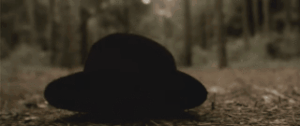 The fourth season may stretch the remit of Fargo more than ever before, but over the past few seasons, the show has steadily developed into more of a Coen Brothers mashup, a tone poem to their sensibilities, than just a Fargo spin-off. There’s a huge, apparent inspiration from Miller’s Crossing in season four, one of the Coen Brothers’ best films. Not only the time period, style, and plot, but specific characters too. Gaetano reminded me of Jon Polito’s Johnny Casper and Rabbi Milligan of protagonist Tom Reagan. There are also easter eggs dotted throughout which are fun to spot, like “Treehorn Trucking” being a nod to The Big Lebowski, a shot of a No Country for Old Men-style cattle gun, a hydraulic tube similar to the one in The Hudsucker Proxy, and a prison break bearing similarities to the one in Raising Arizona. There’s even a quote from that film too: “Girl, you got a panty on your head”.
The fourth season may stretch the remit of Fargo more than ever before, but over the past few seasons, the show has steadily developed into more of a Coen Brothers mashup, a tone poem to their sensibilities, than just a Fargo spin-off. There’s a huge, apparent inspiration from Miller’s Crossing in season four, one of the Coen Brothers’ best films. Not only the time period, style, and plot, but specific characters too. Gaetano reminded me of Jon Polito’s Johnny Casper and Rabbi Milligan of protagonist Tom Reagan. There are also easter eggs dotted throughout which are fun to spot, like “Treehorn Trucking” being a nod to The Big Lebowski, a shot of a No Country for Old Men-style cattle gun, a hydraulic tube similar to the one in The Hudsucker Proxy, and a prison break bearing similarities to the one in Raising Arizona. There’s even a quote from that film too: “Girl, you got a panty on your head”.
Away from the larger ideas, there are of course many smaller details that remain in the season and link it to is fellow Fargo instalments. It is inspired to some degree by true events, like the freak tornado and the train station massacre. Certain quotes crop up again, like “you mean… what do you mean?” Men are described as animals, be it lions, wolves, or tigers, which is a motif throughout the show. Certain shots from the film are recreated, such as the opening shot of the car cresting a hill. Random chance scuppers plans and sets the plot into motion. As with every season so far, there’s a conflict between brothers. The History of True Crime in the Midwest book makes a reappearance. After clubs, supermarkets, breakfast, and car parks, the fourth season introduces a new “King of…”, with the “King of Tears” mortuary. Like season two, the other flashback season, the fourth season picks up soon after a war and many characters are returning soldiers. Again, the show explores how these experiences shaped them, from Gaetano to Doctor Senator and even Oraetta. The list of Fargo-proving connections goes on and on.
 Fargo is a story of shocking depravity but also of warm-hearted wholesomeness. A simple battle between good vs evil, but also the levels between the two. In the film you have Marge, pure good, and Peter Stormare’s Gaear, pure evil, but also Steve Buscemi’s Carl and William H. Macy’s Jerry Lundegaard who are somewhere in the middle of the spectrum. Carl is a criminal, undoubtably nasty but crucially human, and Jerry is a man out of his depth in criminality after making a bad choice. Season four is a season of Steve Buscemis, until they all turn into Jerry Lundegaard. The season presents us with a brutal cycle of immigrant gangs vying for control of Kansas City, and their own lives, achieving it, and then being usurped by the next in the cycle. As the cyclical nature of violence progresses throughout the season, almost every character descends down the hierarchy of criminality until they are all Jerry Lundegaard.
Fargo is a story of shocking depravity but also of warm-hearted wholesomeness. A simple battle between good vs evil, but also the levels between the two. In the film you have Marge, pure good, and Peter Stormare’s Gaear, pure evil, but also Steve Buscemi’s Carl and William H. Macy’s Jerry Lundegaard who are somewhere in the middle of the spectrum. Carl is a criminal, undoubtably nasty but crucially human, and Jerry is a man out of his depth in criminality after making a bad choice. Season four is a season of Steve Buscemis, until they all turn into Jerry Lundegaard. The season presents us with a brutal cycle of immigrant gangs vying for control of Kansas City, and their own lives, achieving it, and then being usurped by the next in the cycle. As the cyclical nature of violence progresses throughout the season, almost every character descends down the hierarchy of criminality until they are all Jerry Lundegaard.
At the beginning of the season, Thurman fits the role of the classic ‘Jerry’ Fargo protagonist, albeit pushed to the side lines in the over-stuffed story. He’s the nervous, out-of-his-depth, unwittingly-criminally-entrenched, “okay then”-murmuring character. Then we learn that Odis is like that too. He’s a guy searching for control in his life but finding himself powerless – a bad decision forcing him to be a pawn in a gang war he wants to run from. Slowly, but somewhat brilliantly, the show reveals that most of its characters are like this. They are not in the defined Fargo roles we thought they were, there are no Gaears or Marges, and everyone is a Carl or Jerry. Rabbi isn’t a badass who chose a side – he’s trapped in the cycle and wants out. Josto and Oraetta were abused as children and are trying to create some warped sense of control over their own lives (and others). Loy just wants the American Dream he was promised and is continually snatched away from him.
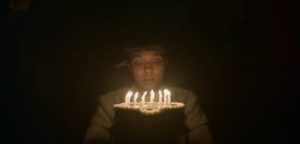 We initially think these two crime syndicates, Cannon and Fadda, are in control, the fight for which is what the whole season is about. Unlike previous Fargo protagonists, like Jerry, Lester, Ed, or Ray, they call the shots and aren’t little people caught up in wider plot mechanics born of chance and cosmic coincidence. Because of that, at the start of the season, I can see why people wouldn’t immediately recognise the show as Fargo. But the season then peels back the layers and we realise the characters are like that. Other criminal syndicates come in and the cycle continues, whether from New York or from Fargo itself, which is again treated like an almost mythical town of criminality. Both Cannon and Fadda are cannon fodder. Loy almost gains control over his life but a past choice literally stabs him in the back. As the season ends the only person who manages to do so is Ethelrida. She writes a history report and learns from it because she’s seen the true story of America, and the lies it’s composed of.
We initially think these two crime syndicates, Cannon and Fadda, are in control, the fight for which is what the whole season is about. Unlike previous Fargo protagonists, like Jerry, Lester, Ed, or Ray, they call the shots and aren’t little people caught up in wider plot mechanics born of chance and cosmic coincidence. Because of that, at the start of the season, I can see why people wouldn’t immediately recognise the show as Fargo. But the season then peels back the layers and we realise the characters are like that. Other criminal syndicates come in and the cycle continues, whether from New York or from Fargo itself, which is again treated like an almost mythical town of criminality. Both Cannon and Fadda are cannon fodder. Loy almost gains control over his life but a past choice literally stabs him in the back. As the season ends the only person who manages to do so is Ethelrida. She writes a history report and learns from it because she’s seen the true story of America, and the lies it’s composed of.
What are your thoughts on Fargo’s fourth season? Let me know in the comments and be sure to geek out with me about TV, movies and video-games on Twitter @kylebrrtt.








